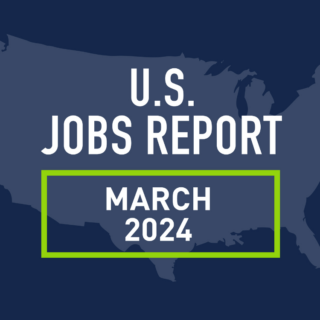According to the Pew Research Council, 18.8 percent of people over 65 worked in 2016, while the National Council on Aging reports that, by 2019, over 40 percent of people over age 55 are expected to be working. With the increase of older employees in the workforce, age discrimination in the workplace will become a greater issue, necessitating strategic planning to avoid age-related issues. In this post, we outline the issues and offer concise solutions to combat age discrimination in the workplace.
What is Age Discrimination in the Workplace?
In the United States, the Age Discrimination in Employment Act (ADEA) is a federal law that protects individuals 40 years of age or older from age-based employment discrimination. According to the ADEA, the following are examples of age discrimination in the workplace:
- Not hiring an individual because an employer wants a younger-looking person for the role.
- If a person receives a negative performance review because they were too old or inflexible to taking on new projects.
- Firing an individual because management wants to hire and retain younger less expensive workers.
- Turning an individual down for promotion because they are “too old” for the position or they want “new blood” in a position.
- When company layoffs are announced, most of the persons laid off are older, while younger workers with less seniority and less on-the-job experience are kept on.
- Before termination, supervisors or management made age-related remarks about an individual such as the person being “over-the-hill,” “ancient,” or “an old man or woman.”
If any of these situations take place, employees may have a solid case against a company for age discrimination in the workplace.
Managing Age Diversity in the Workplace
A study by PricewaterhouseCoopers revealed that 64 percent of CEOs surveyed had adopted strategies promoting diversity and inclusiveness. However, only 8 percent included age as a factor in their diversity strategy. This means that many businesses may be ill-equipped to properly manage an age-diverse workplace.
Older employees bring with them years of experience, tried and true ideas and problem-solving approaches that can be of great benefit to a business. However, multi-generational workplaces also come with unique challenges, which if mismanaged, can lead to unsatisfied employees and hampered business efficiency. This means getting it right depends on smart management and an open-minded leadership approach. Here are some ways businesses can effectively manage and create a positive working environment free of age discrimination in the workplace:
Flexibility:
Older individuals may need more flexibility in the workplace dues to age-related illnesses, family obligations and physical ability. Providing flexibility to older employees allows them to participate in the workplace without feeling like they are a burden to the company they work for.
Foster Multi-Generational Team building:
Building age-diverse teams in the workplace allows employees to learn from one another. Older employees can impart knowledge gained through experience to younger employees while younger employees can teach them how to use new technology and techniques.
Both parties benefit from the chance to challenge and motivate one another. That is why businesses should look for opportunities for inter-generational teams to collaborate on projects whenever possible.
Job Requirements:
There are a few circumstances when it is lawful for an employer to treat people differently if it is a legal requirement that the employee must be of a particular age. When deciding if this applies, it is necessary to consider the nature of the work and the context in which it is carried out. Jobs may change over time and companies should review whether the requirement continues to apply, particularly when recruiting for certain positions.
Age Discrimination in the Workplace and Recruitment
According to Department of Labor data, the unemployment rate for those over age 55 stands at just 3.6 percent, compared with 5 percent for the total population. While older workers have found a place in the modern workforce, many individuals find themselves the victims of age-based discrimination when it comes to being recruited and hired. There are many ways businesses can avoid age-based discriminatory hiring practices. Below we have listed a couple of tips:
Job Applications
Businesses should remove the age and date of birth fields from job applications. In addition to removing these fields, businesses should also review their applications to ensure that they are not asking for unnecessary information about dates. Asking for age-related information on an application could project an air of discrimination, which could be a liability and dissuade older candidates from applying.
Job Descriptions:
Avoid references, however oblique, to age in the job description. For example, a job seeker could challenge any time requirement, and a business may have to justify it in objective terms, again leaving a business vulnerable to discrimination allegations.
Harassment and Age Discrimination
Harassment is unwanted conduct related to a relevant protected characteristic, such as age, which has the purpose or effect of violating an individual’s dignity or creating an intimidating, hostile, degrading, humiliating or offensive environment for that individual.
Harassment may be intentional bullying which is obvious or violent, but it can also be unintentional, subtle and insidious. It may involve nicknames, teasing, name calling or other behavior that does not have malicious intent but is upsetting. It may be about the individual’s age (real or perceived), or it may be about the age of those with whom the individual associates. It may not be targeted at an individual but consist of a general culture which, for instance, appears to tolerate the telling of age-related jokes.
Businesses may also be held responsible for the actions of employees. To ensure age-related harassment does not take place, businesses should clearly communicate an anti-harassment policy and make sure the policy is thoroughly enforced.
Conclusion:
Fairness at work and good job performance go hand in hand. Tackling discrimination helps to attract, motivate and retain staff and enhances a businesses’ reputation as an employer. Eliminating age discrimination in the workplace helps everyone to have an equal opportunity to work and develop their skills regardless of age.

